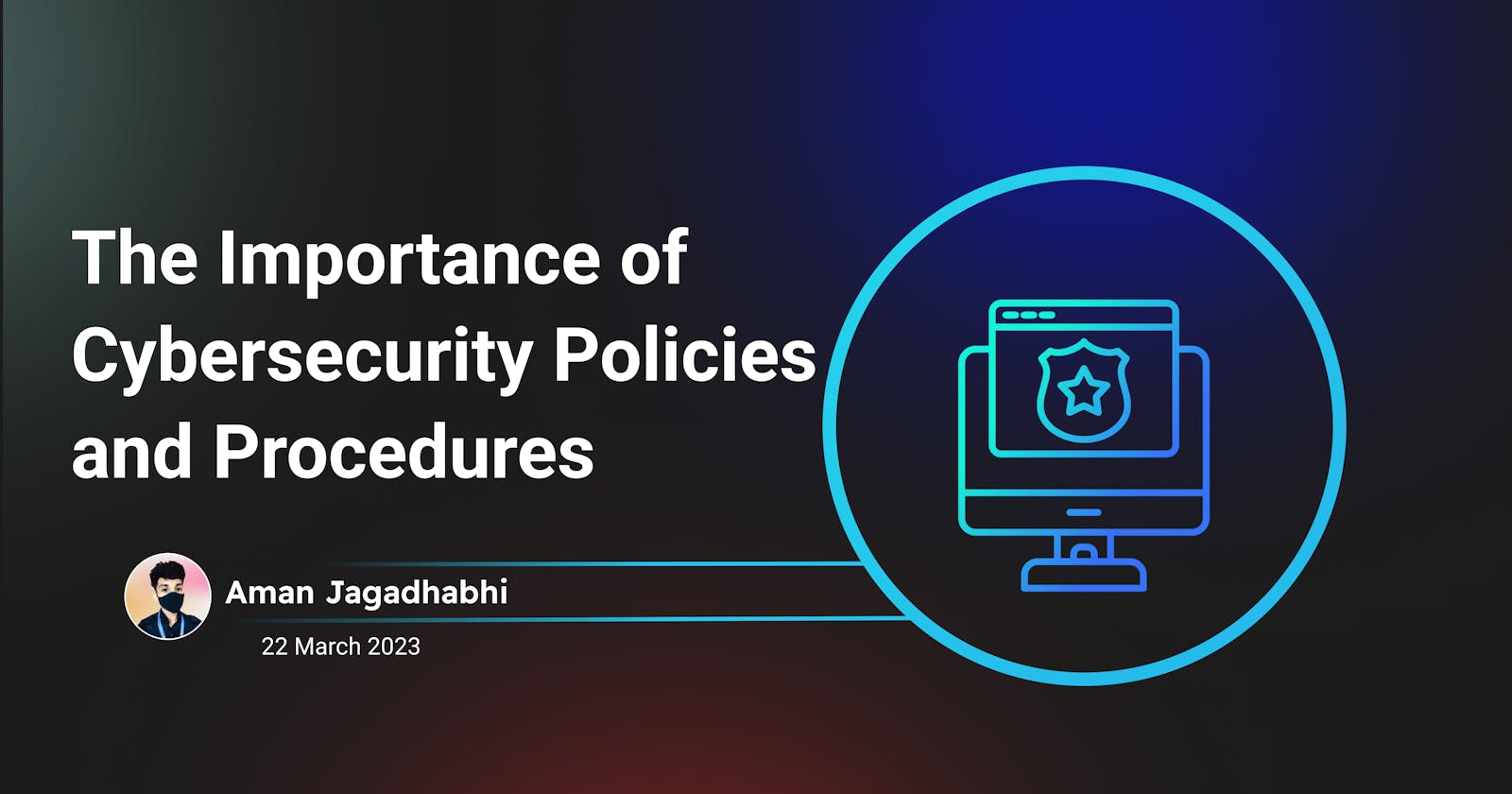Why Cybersecurity Policies and Procedures are Important
Cybersecurity policies and procedures are crucial for protecting your digital assets from cyber threats. They provide guidance on how to handle sensitive data and information, and outline the steps to be taken in the event of a security incident. Without proper policies and procedures in place, your organization could be vulnerable to cyber attacks and data breaches.
Some of the key benefits of implementing cybersecurity policies and procedures include:
Protection of sensitive data: Policies and procedures can help protect sensitive data, such as personal information and financial data, from unauthorized access and theft.
Compliance with regulations: Policies and procedures can help ensure compliance with regulations, such as the General Data Protection Regulation (GDPR), the California Consumer Privacy Act (CCPA), and the Health Insurance Portability and Accountability Act (HIPAA).
Reduction of risks: Policies and procedures can help reduce the risk of cyber attacks and other security incidents by providing guidelines on how to prevent, identify, and respond to such incidents.
Increased awareness: Policies and procedures can help increase awareness among employees and other stakeholders about the importance of cybersecurity and the risks associated with cyber threats.
Example of a Cybersecurity Policy Document
A cybersecurity policy document is a comprehensive guide that outlines an organization's policies and procedures for protecting its digital assets from cyber threats. It covers all aspects of cybersecurity, including access control, network security, data protection, incident response, and employee training.
Here is an example of a cybersecurity policy document:
[Organization Name] Cybersecurity Policy Document
1. Access Control
1.1. All employees and other stakeholders must use strong passwords to access company resources.
1.2. Passwords must be changed every six months.
1.3. Two-factor authentication must be used for all critical systems and applications.
2. Network Security
2.1. All network traffic must be encrypted.
2.2. Firewalls must be used to protect the network from external threats.
2.3. Regular vulnerability scans and penetration tests must be conducted.
3. Data Protection
3.1. All sensitive data must be encrypted at rest and in transit.
3.2. Regular backups must be taken and stored in a secure location.
3.3. Data must be classified based on its sensitivity level.
4. Incident Response
4.1. An incident response plan must be developed and tested regularly.
4.2. All security incidents must be reported to the IT department immediately.
4.3. The IT department must investigate all security incidents and take appropriate action.
5. Employee Training
5.1. All employees must receive cybersecurity training on a regular basis.
5.2. Employees must be trained on how to identify and respond to security incidents.
5.3. Employees must be aware of the organization's cybersecurity policies and procedures.
Cybersecurity Policy Example : This is just an example of a cybersecurity policy document, and each organization's policy may differ depending on its specific needs and risks. It's essential to work with a cybersecurity expert to develop policies and procedures that are tailored to your organization's requirements.
In conclusion, cybersecurity policies and procedures are essential for protecting your digital assets from cyber threats. By implementing strong policies and procedures, you can reduce the risk of security incidents and ensure compliance with regulations. It's crucial to

